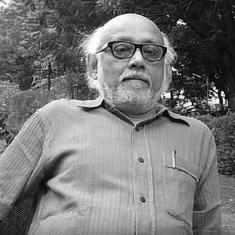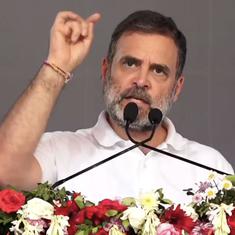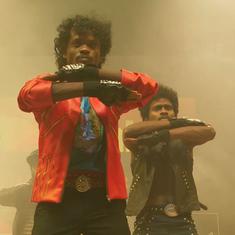Earlier analyses by political scientists tended to emphasise the compulsions of electoral mobilisation and factional power conflicts within the ruling Congress Party or the masking of communal or ethnic demands by those of language. A spate of recent research on the emergence of reading publics in the different regions of India – which came about as a result of the proliferation of printed literature in the modern Indian languages in the 19th and 20th centuries – has given us an entirely new perspective for understanding the cultural foundations of mass nationalism. We can now see that the imagination of the nation as a community of millions of people unrelated by kin or face-to-face proximity was enabled by the circulation of printed texts in newspapers, magazines, novels, government circulars, and textbooks. Poets, novelists, and playwrights performed a crucial role in creating the emotional attachment of masses of people to something they learnt to call their nation. The printed text was supplemented by the performance of songs and plays as well as the circulation of printed images. This was possible only through the medium of the standardised print vernaculars.
Consequently, the consciousness of large democratic solidarities was grounded in the regional languages. This was the reason why the Congress, at the moment of its transformation into a mass movement of nationalism, realised the importance of organising itself into monolingual provincial organisations. The same force was active after Independence in the demand for linguistic states. But if the proximate community of national solidarity was built around the regional languages, how could there be a sense of Indian nationhood?
This is where the Indian experience has produced a unique historical example. This book will set out the argument that the description of the Indian nation varies according to the language formation in which one is positioned. The nation is imagined and contested in different ways in Tamil, Marathi, Urdu, Hindi, Punjabi, Assamese, or Bengali, and different genres of prose and verse literature, music, art, and theatre participate in this project of imagination. But even when the entity may be called the Indian nation, it actually looks different from each regional perspective. This is reflected in the fact that the terms “nation” and “state” often have different equivalents in the regional languages. Thus, Assamese and Odia use desh, and Telugu and Tamil desam and tecam, to mean nation, while in Bengali the word is jati. The word for state in Bengali is rashtra and in Telugu rashtram, which are completely different from the way the word is used in Hindi. Tamil uses arasu or maanilam.
These differences are not merely nominal, because each of these words have different conceptual and affective histories in each language. My argument, therefore, is that we can only, and necessarily, get a relativist view of the Indian nation – relative to the linguistic region from which one is looking – since there is no available linguistic perspective from which we can obtain an invariant view of the object. Academic histories produced in English by professional historians only give us the history of the Indian nation-state built around an imperial state apparatus. The history of the Indian nation as a solidarity of the people can only be imagined in a vernacular print language: of these, there are several and each produces a different description of the Indian nation. Consequently, only a relativist view can reconcile the history of the state with that of the people.
Thus, in Maharashtra, the memory of the Maratha Empire frames the imagination of a sovereign people, united by Maharashtra Dharma, fighting a prolonged war against the Mughals under the leadership of the warrior-king Shivaji. This nation, portrayed mainly by Brahmin writers, is male, militant, and imperial, in which Maharashtra leads the rest of India. But this vision was challenged by anti-Brahmin intellectuals who rejected the inheritance of the Peshwa-dominated Maratha Empire and instead held up the devotional congregation of the Varkari sect of Pandharpur as the living soul of Maharashtra Dharma.
By contrast, the imagination of the nation in Bengal is that of a mother, insulted and injured by foreign rulers, seeking protection and sacrifice from her children. The image of the mother goddess came to dominate this representation of the nation, iconically symbolised in the song Vande Mataram. Soon, this representation of Mother Bengal was transformed into the image of Bharat Mata and circulated all over India. This showed that signifiers of the nation could be used interchangeably for the regional as well as the pan-Indian community, depending on the context. But this vision of the nation in Bengal, constructed mainly by Hindu upper-caste writers, with its strong association with the iconography of the warrior mother-goddess, was contested by Muslim intellectuals. Interestingly, when Bangladesh was created in 1971, it adopted as its national anthem a song by Rabindranath Tagore that represented Bengal as a homely mother who loves, shelters, feeds, and plays with her children – yet another transformation of the same signifier familiar in Bengal’s literary imagination.
In the Tamil region, the language itself was deified as the iconic maternal image of Tamilttāy. Tamil acquired the status of a classical but living language that rivalled Sanskrit. When the first generation of Brahmin nationalists identified the Indian nation with Aryan Hinduism, they were challenged by the non-Brahmin movement in the mid-20th century. The public register of the Tamil language in the theatre, cinema, and political oratory was classicised by replacing Sanskrit with pure Tamil words. This was the reverse of what happened with most North Indian languages, which produced a modern vocabulary for public use by adopting or coining neologisms out of Sanskrit words. Further, the historical imagination of the state was stoked in Tamil Nadu by memories of the glory of the Pallava, Chola, and Pandyan kingdoms, rivals to the empires of the North.
The Dravidian movement was launched by the Justice Party which was anti-Congress and pro-British. Later, EV Ramasamy sustained the critique of mainstream Indian nationalism by pointing to a series of real and imagined overlaps between the Hindu religion, the Brahmin caste, the Sanskrit language, the Aryan race, the valorisation of unproductive occupations, and the patriarchal subordination of women. This reached a critical point in the anti-Hindi agitations of 1937–40 and the early 1950s when the Dravidian movement demanded freedom from Hindi imperialism by separating from India. The legacy of Dravidianism and the anti-Brahmin movement in Tamil Nadu continues to this day, even though there is no separatist political demand any more. The imagination of the Indian nation in Tamil is thus quite distinct.
The role that secondary education plays in grounding the imagination of the nation in a language is dramatically shown in the large swathe of North India where Urdu was the language of bureaucracy and education in the colonial period. In Punjab, the modern high literary culture of the province was built through the medium of Urdu. But the regional and cultural identity signified by Urdu was much larger than Punjab. When the Arya Samaj tried to build a reformed Hindu identity in Punjab, it preferred to use Hindi as its chosen language which occupied an equally large cultural space. Ironically, therefore, Punjabi, which was the ordinary spoken language of most Punjabis, did not become a modern print vernacular before the partition of the province in 1947. The imagination of the nation in Punjab, split between three languages – Urdu, Hindi, and Punjabi – finally acquired three distinct demographic categories tied to three religious groups – Muslims, Hindus, and Sikhs. These divisions were resolved politically not merely by the bloody partition of Punjab between India and Pakistan, but also by the later separation of Haryana from Punjab. Nevertheless, the relation between regional solidarity and the pan-Indian remains problematic because of the continued resonance of a distinct Sikh nationalism.

Excerpted with permission from For a Just Republic: The People of India and the State, Partha Chatterjee, Permanent Black and Ashoka University.










